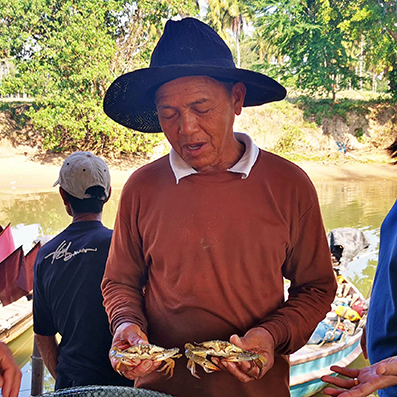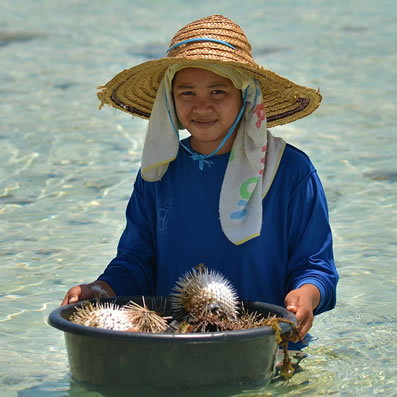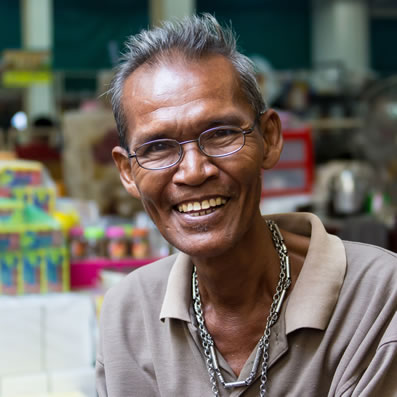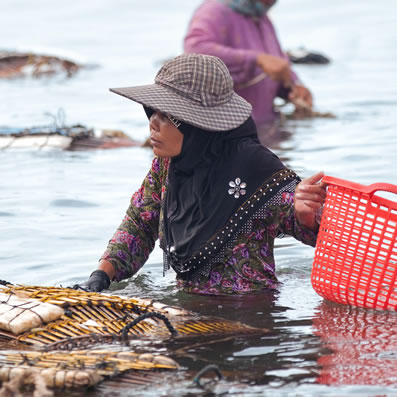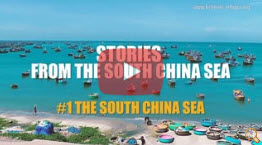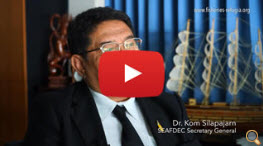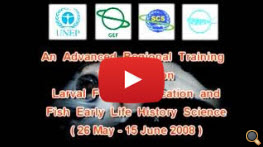THE SOUTH CHINA SEA FISHERIES REFUGIA INITIATIVE
FISHERIES REFUGIA PROJECT SITES
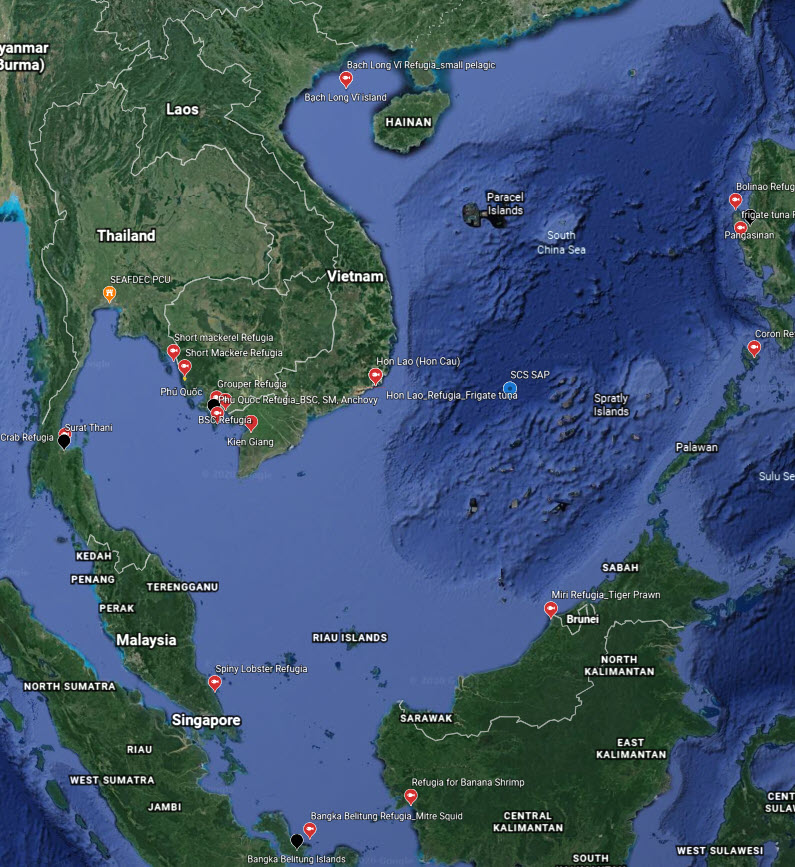 Click Here for
Click Here for More
Information
SCS SAP PRIORITY SITES (Habitat Linkages)
 All SCS SAP and
All SCS SAP and Fisheries Refugia
Priority Sites CHINA HABITAT
SITES CAMBODIA HABITAT
SITES INDONESIA HABITAT
SITES PHILIPPINES HABITAT
SITES THAILAND HABITAT
SITES VIET NAM HABITAT
SITES
Meet our Stakeholders
Social Media
Social Media
Highlights the Results of the
Fifth Meeting of Regional Scientific and Technical Committee (RSTC5)
16-17 March 2022
The 5th Regional Scientific and Technical Committee Meeting (RSTC5) was convened by the Project Coordination Unit on 16-17 March 2022; this is a virtual meeting via the Zoom platform. The meeting updated the progress on national and regional programs implemented as of 31 December 2021. The meeting discussed the progress works by each country's partners, recommendations from the Mid-term Review, the first draft guidelines on Indicators for sustainable management of fisheries refugia, the marine and coastal planning of six participating countries, the proposed regional training workshop on larval fish identification and early life history study, as well as the financial report as of 31 December 2021.
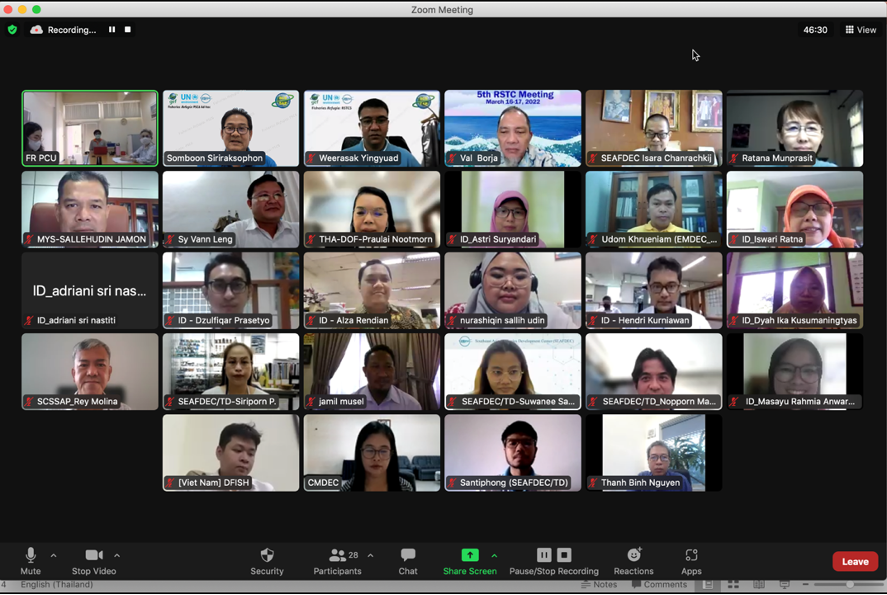
- RESULTS OF THE MID-TERM REVIEW
A Mid-Term Review of the SEAFDEC/UNEP/GEF Project: Establishment and Operation of a Regional System of Fisheries Refugia in the South China Sea and the Gulf of Thailand has been undertaken, consistent with the requirements of the GEF and UNEP by Dr. Peter Whalley between November 2021 and February 2022. The review is designed to inform stakeholders, including the GEF Agency and Executing Agency, on the levels of achievement of the project towards the delivery of the planned outputs and outcomes and provide suggestions to the Project on key activities that would assist enable the achievement of the overall planned objective.

Overall, the Project was assessed by this Mid-Term Review as being Moderately Satisfactory. The Mid-Term Review acknowledges the project's achievements to date but considers that there is still a significant program of work required to complete the project within the next year and rates the output delivery as Moderately Satisfactory. The project builds directly on the success of the Strategic Action Programme and is highly relevant to the region's countries, and the strategies of UNEP and the Relevance are considered to be Highly Satisfactory. The project has effectively established 12 refugia sites, undertook multiple workshops, capacity development, and awareness-raising activities, and was rated as Satisfactory. The efficiency of project execution was rated as Moderately Satisfactory due to the delays associated with the change of project managers, the slow contracting of some countries to implement pilots, and the inevitable delays resulting from COVID, resulting in a two-year no-cost extension. The overall sustainability of the project's activities is considered to be Likely through the support of an active regional fisheries organization and strong support from the countries demonstrated by the endorsed Strategic Action Programme.
- INDICATOR FOR SUSTAINABLE MANAGEMENT OF FISHERIES REFUGIA
Indicators play an essential part in the communication of scientific results to decision-makers. Many countries develop indicators to support effective decision-making and policy-setting at every stage of the decision-making cycle - during problem identification, policy formulation, implementation, or policy evaluation. The Indicators for Fisheries Refugia have been discussed since September 2019 through the Regional expert consultation. The Project Coordinating Unit could develop the first draft guidelines for consideration at the RSTC5 Meeting based on the brainstorming session. The guidelines reflect the needs of indicators by six implementing countries to support the sustainable management of fisheries refugia.
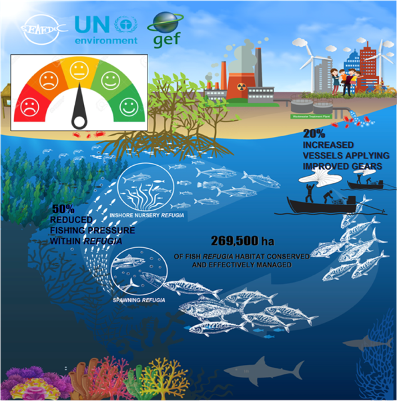
Some Indicators of Fisheries Refugia Project
The indicators defined by regional fisheries refugia experts are based on a structural framework for enhancing the sustainable management of fisheries refugia, including twelve targets under four dimensions: social, ecosystem, economic, and governance. Climate change impacts on the ecosystem are considered a critical cross-cutting dimension in the structural framework consisting of 3 sub-dimensions. In addition, the indicator related to gender aspects is included in the social dimension. It is expected that a total of 15 targets with 44 criteria and 94 indicators specified as operational tools will practically guide the government in effectively managing fisheries refugia for long-term sustainability in Southeast Asia and other regions.
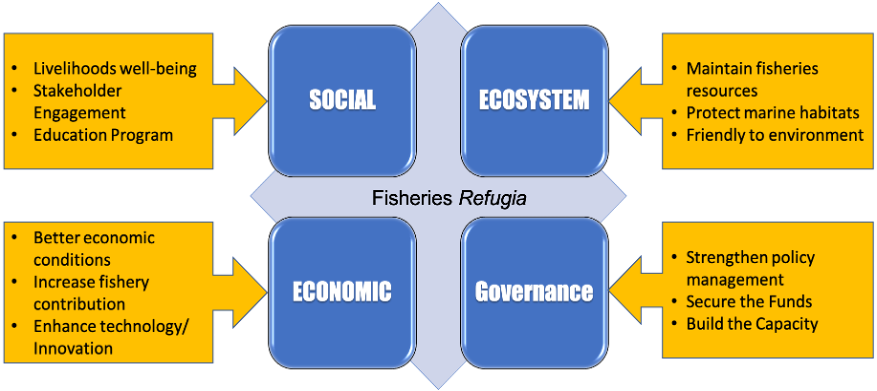
A structural framework for enhancing the sustainable management of fisheries refugia
- MARINE AND COASTAL PLANNING
Sharing of the information on marine and coastal planning was raised by the UNEP Task Manager during the Fifth Meeting of the Project Steering Committee (PSC5) held in September 2021. Accordingly, the PCU added this agenda at the RSTC5 Meeting, where Cambodia, Indonesia, Malaysia, and Thailand updated their national legislations, policies, strategic plans, and frameworks for marine and coastal management. Cambodia shared that the indicator framework for marine fisheries management has been designed to assess the outputs achieved by Fisheries Administration (FiA) based on the four development pillars such as Capture Fisheries Management, Aquaculture, Fisheries Value Chain, and Regulatory and Service. Indonesia highlights the spatial planning in their territory, which is administratively divided into National Spatial Plans, Provincial Spatial Plans, and District/city Spatial Plans; these are under Law No. 26 of 2007 on spatial planning. Malaysia emphasizes the National AGRO –Food Policy and National Security Policy, as well as the role of the Fisheries Department in the Fisheries Strategic Plan for 2021-2030 under the Fisheries Act 1985. Thailand focuses the national policy frameworks and management plans on the fisheries sector and the environment sector, covering Marine and Coastal Resources Management. The Fisheries Management Plans (FMP), revised every three years, are based on international best practices and Thailand's international fisheries obligations, applying the ecosystem approach to fisheries management (EAFM) that aims to balance ecological well-being (fish resources and the environment) with human well-being (social and economic benefits).
- OVERALL PROGRESS ON ESTABLISHING FISHERIES REFUGIA
The overall progress on establishing fisheries refugia as of 30 March 2022 shows there are adopted three Refugia Sites in Kep/Cambodia, Koh Kong/Cambodia, and Surat Thai/Thailand. The other seven Fisheries Refugia in Kampot/Cambodia (1 site), Trat/Thailand (1 site), Johor and Miri, Malaysia (2 sites), and Bolinao, Masinloc, and Coron of Philippines (3 sites) are in process for adoption by the responsible agencies or ministry. In the case of Indonesia, it is in the process of identifying the Fisheries Refugia Boundaries in both pilot sites that require responsible interagency support in the establishment of the fisheries management areas. In the case of Viet Nam, due to delayed undertaking, Viet Nam focuses more on formulating guidelines and detailed regulations for establishing and managing the Fisheries Refugia. The activities will further support D-Fish to guide the provinces to identify and manage the Fishery Refugia in alignment with the revised 2030 Master Plan for Fishery Resource Protection and Exploitation, which is underway for government approval by the second quarter of 2022.

- LEGISLATIONS REFORMED AND FISHERIES MANAGEMENT PLAN
Regarding the reformation of legislations and fisheries management plans, Cambodia and Thailand have completed the proclamation of fisheries refugia in Kep and Koh Kong Province in Cambodia and the Strategic Plans and Action Plan in project sites. Thailand's Government approved the Notification Order for fisheries refugia in Surat Thani Province and adopted the Law, and Fisheries Management Plans to support the fisheries refugia operation. Additionally, the Philippines, Indonesia, Malaysia, Viet Nam are underway fisheries legislation and management plans.

Some Fishery Policy and Fisheries Management Plans
to support the establishing and operation of a Regional System of Fisheries Refugia
-
STRENGTHENED KNOWLEDGE MANAGEMENT AND INFORMATION SHARING AND ACCESS
There are 253 national reports and 13 regional reports uploaded to the regional refugia website: https://fisheries-refugia.org Accordingly, Indonesia and Thailand have completed developing an online web portal, while Malaysia and the Philippines are underway.
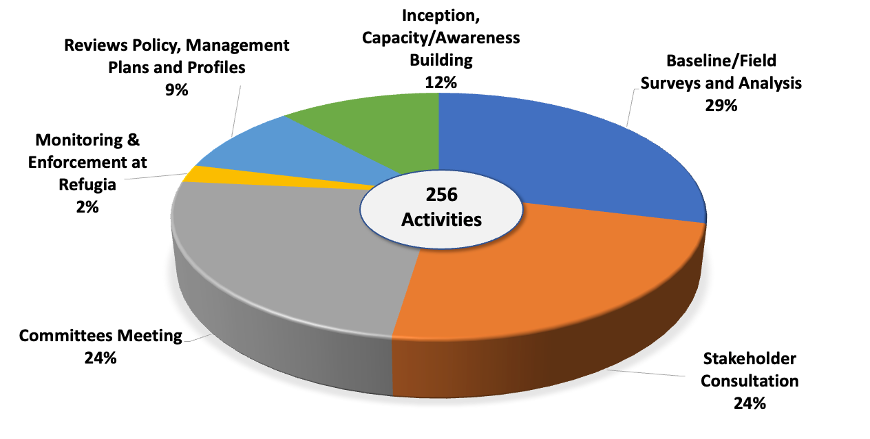
National activities by six categories as of 31 December 2021
The setting of the Refugia Information Centre (RIC) to promote the fisheries refugia concept is another crucial achievement in which Malaysia has set three RIC covering two pilot sites in Miri/Sarawak and Tanjung Leman/Johor and at Headquarter. While the Philippines have consulted with Local Government Unit to use their office space for two RIC in Bolinao/Pangasinan and Masinloc/Zambales.
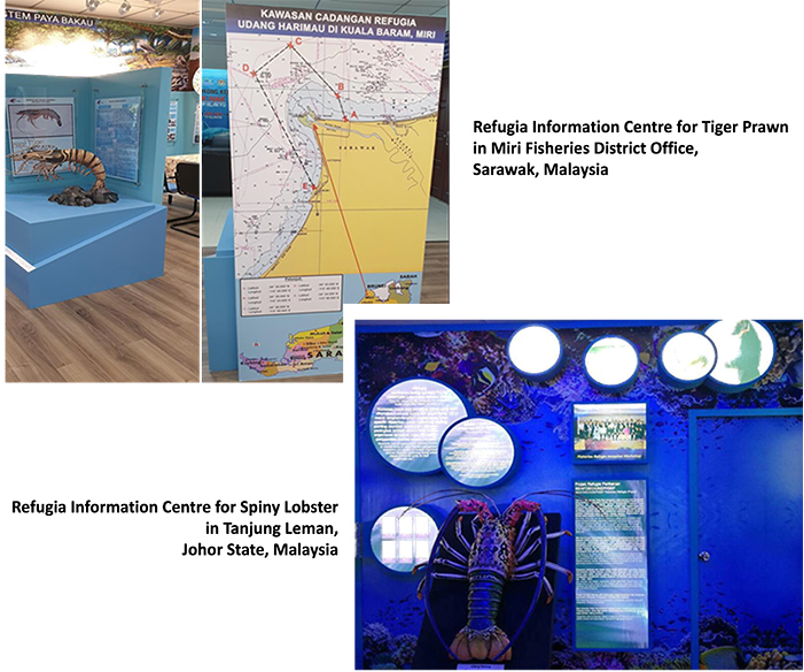
On Finance matter, as of 31 December 2021, the project has already spent two-thirds of the budget, which is about two (2) million USD, since the project started in 2016. In other words, the project has about one (1) million USD left for 2022.
